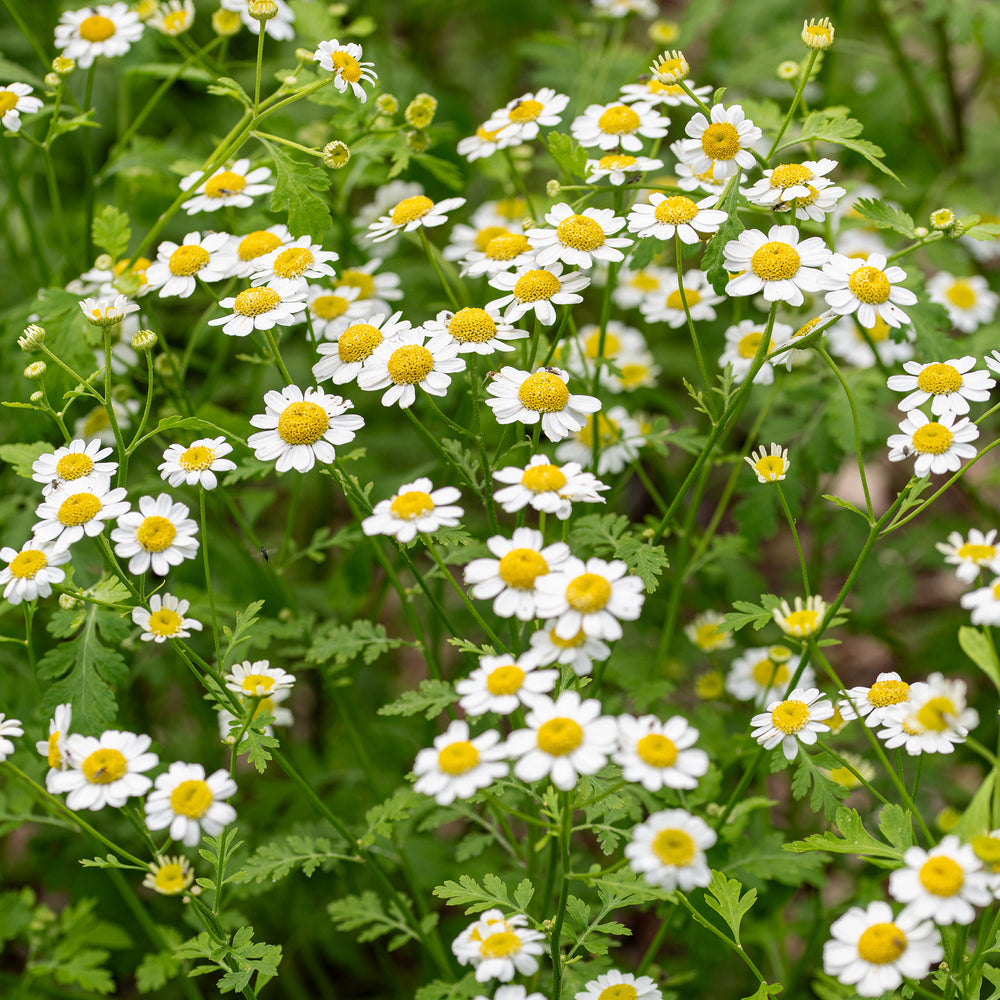
Dharaseeds
Feverfew Organic Seeds
Estimated Free Delivery between April 16 and April 19.
Secured Payment Methods
Your transaction is protected with advanced security measures to keep your information confidential
Feverfew (Tanacetum parthenium) is a hardy perennial herb widely known for its medicinal properties, especially in treating headaches and migraines. With its classic daisy-like flowers and aromatic, feathery foliage, Feverfew Organic Seeds offer a natural and sustainable way to grow this beneficial plant in your garden. This organic variety is grown without synthetic chemicals, ensuring a healthier choice for your garden and the environment.
Key Benefits
- Medicinal Properties: Known for its potential to alleviate headaches, migraines, and other ailments. Traditionally used as a natural remedy for pain relief and inflammation.
- Organic and Sustainable: Grown using organic practices without synthetic pesticides or fertilizers, ensuring a healthier plant for you and the environment.
- Pollinator-Friendly: Attracts beneficial insects such as bees and butterflies, making it an excellent addition to any pollinator garden.
- Aesthetic Appeal: Features vibrant white flowers with yellow centers and aromatic, feathery green leaves, adding beauty to herb and flower gardens.
- Low Maintenance: Easy to grow and care for, making it ideal for gardeners of all skill levels.
Variety Features
- Flower Type: Bright white flowers with yellow centers, resembling daisies.
- Foliage: Aromatic, finely divided, feathery green leaves that release a pleasant fragrance when crushed.
- Height: Grows up to 12–18 inches tall, perfect for borders, containers, or herb gardens.
- Flowering Season: Blooms from late spring to summer, providing a long season of interest.
- Harvesting Time: Flowers are ready to harvest when fully open but still firm, typically in mid-summer.
Planting Instructions
Best Planting Time:
- Plant seeds in early spring after the last frost or start them indoors 6–8 weeks before the last expected frost for an earlier bloom.
Planting Tips:
- Depth: Plant seeds about 1/8 inch deep. Gently press them into the soil to ensure good contact.
- Spacing: Space seeds 6–8 inches apart to allow for proper growth and air circulation.
- Soil Type: Feverfew thrives in well-drained soil that is slightly alkaline to neutral. Enriching the soil with compost can improve fertility and drainage.
- Light Requirements: Feverfew requires full sun for optimal growth, but it can tolerate partial shade in hotter climates.
Care Instructions
Watering:
- Water consistently, keeping the soil moist but not soggy. Allow the soil to dry slightly between waterings to prevent root rot.
Fertilizing:
- As an organic plant, Feverfew benefits from the addition of organic compost. Avoid using chemical fertilizers, as they can disrupt the plant's natural growth.
Pruning:
- Deadhead spent flowers to encourage more blooms. Cut back any leggy growth to maintain a neat and tidy appearance.
Pests and Diseases:
- Feverfew is relatively pest-resistant, but you may need to monitor for aphids or slugs. Use organic pest control methods if necessary. Ensure proper spacing and air circulation to prevent fungal diseases.
Harvesting
- For Medicinal Use: Harvest the leaves and flowers once the plant is fully mature and blooms have opened. Dry the flowers and leaves in a shaded, well-ventilated area. Store them in airtight containers.
- For Fresh Use: Cut fresh leaves and flowers for use in teas or culinary dishes. Always use sparingly, as feverfew has a potent flavor.
Storage
- Drying: Hang fresh flowers and leaves upside down in a dry, cool space to preserve them for later use.
- Storage: Store dried leaves and flowers in airtight containers in a cool, dark place to maintain their potency.
Aesthetic and Culinary Uses
- Aesthetic Appeal: The bright, daisy-like flowers add a cheerful touch to herb gardens, flower beds, or containers. The finely divided foliage provides texture and visual interest throughout the growing season.
- Culinary Uses: Feverfew leaves can be used sparingly in teas and salads. It is more commonly used in traditional herbal medicine, particularly for its headache-relieving properties.
Conclusion
Feverfew Organic Seeds offer a great way to grow this beneficial herb in a sustainable and environmentally friendly way. Whether you're cultivating it for its medicinal properties or simply for its beauty in the garden, feverfew is an easy-to-grow, hardy plant that adds both functional and aesthetic value to any garden. With its pollinator-friendly flowers and aromatic foliage, it’s an ideal choice for organic gardeners looking to grow a versatile herb.









